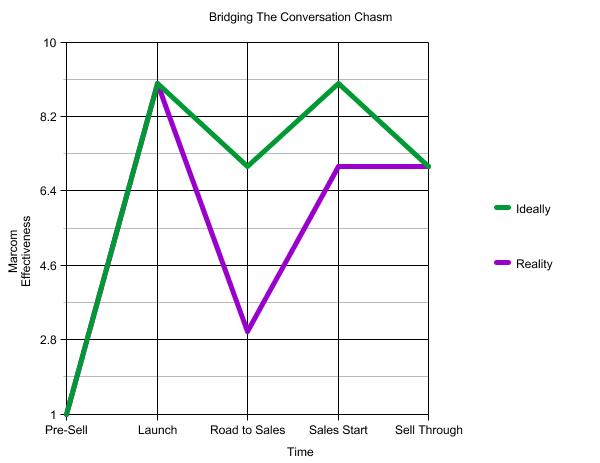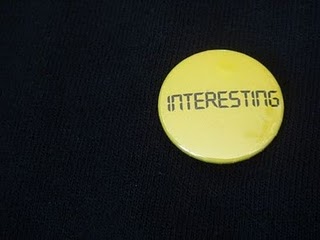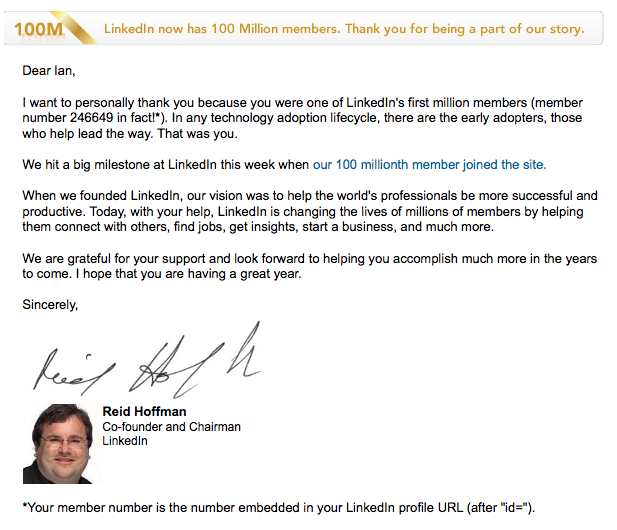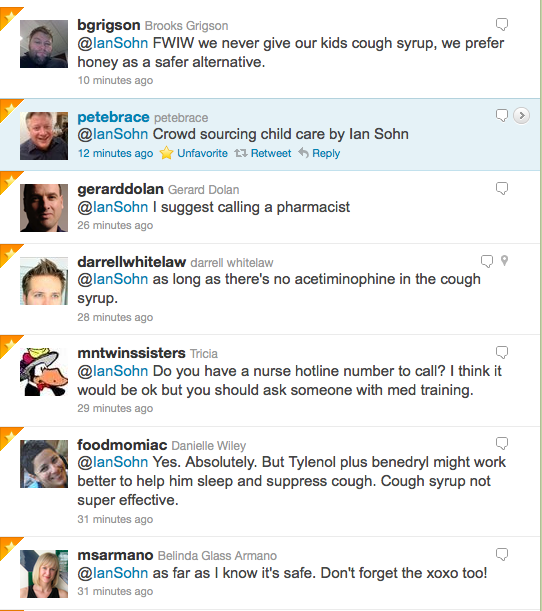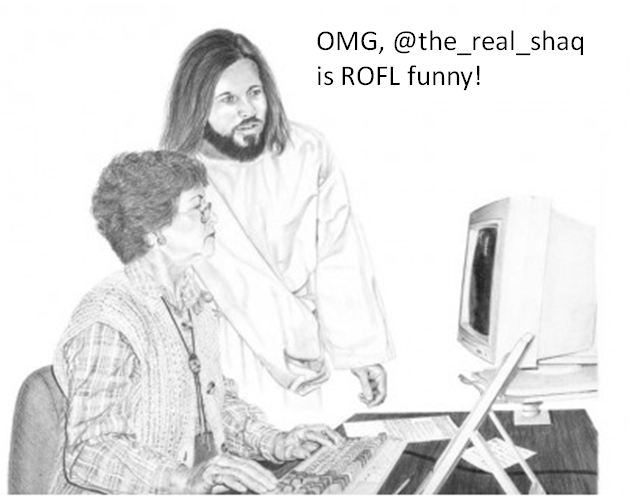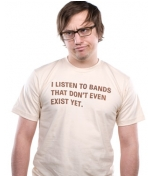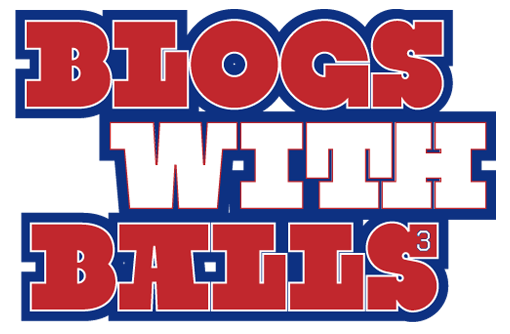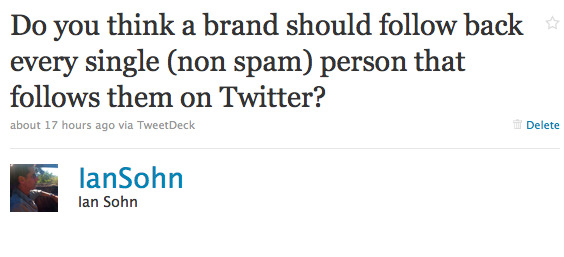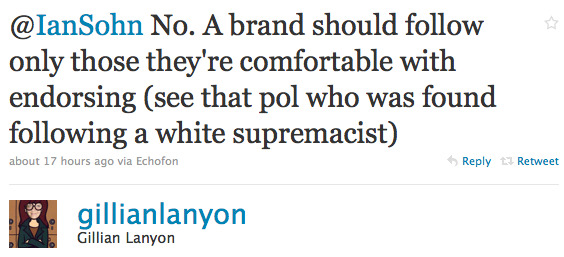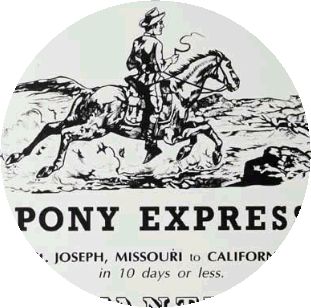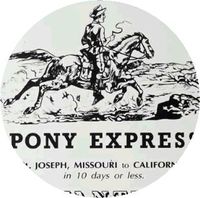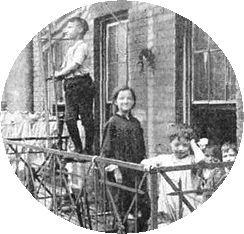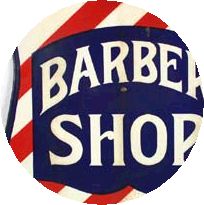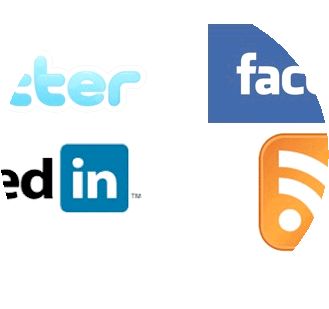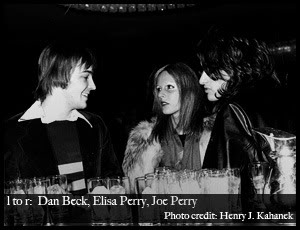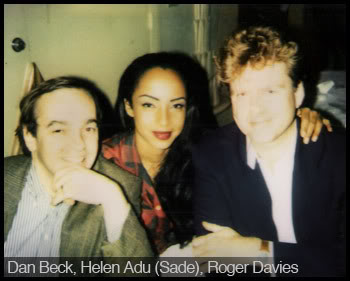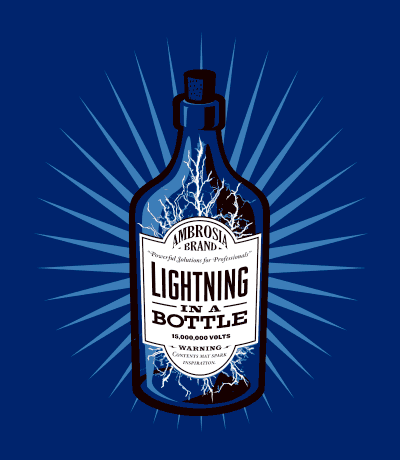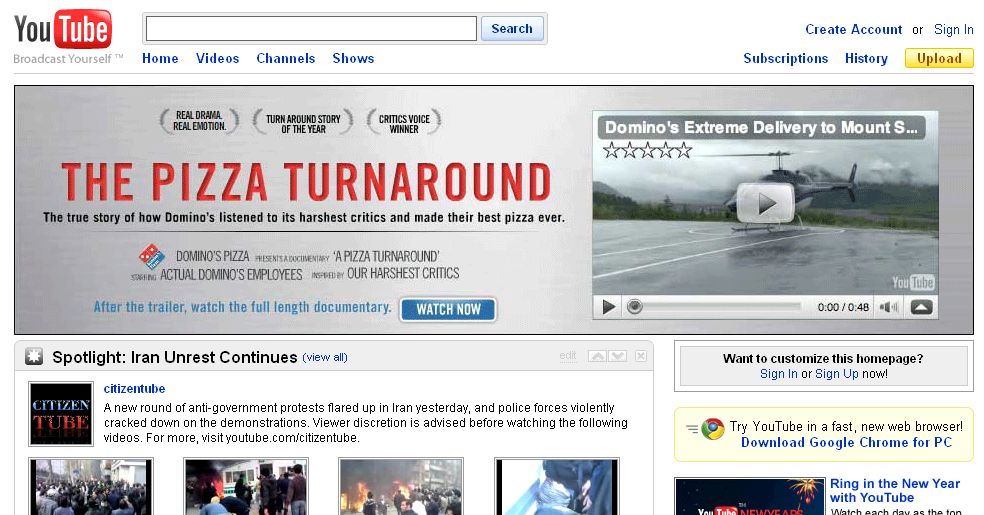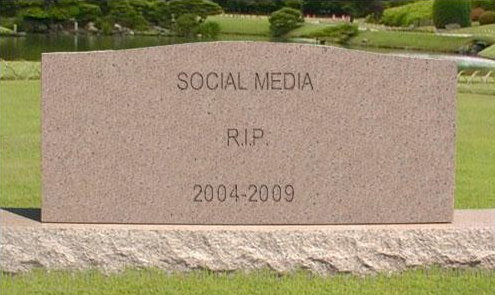I was talking to my newest colleague (and likeminded thinker) Alan Kercinik the other day about the missed communications opportunities between when new products are announced and they are actually available for purchase.
I call it the Conversation Chasm. And yes, I'm sure I'm not the first person to use the phrase.
Just thinking out loud over morning coffee ...
In my own very crude way, I tried to chart it out below.
- Pre-sell: Where very early meetings take place between manufacturer and retailer. Usually a dark period for manufacturer due to competitive fears.
- Launch: A moment in time. A press conference. A stunt. A trade show. Hope is to make a big splash with buyers, media and consumers.
- Road to sales: More sell-in to retail, but not much focus on the consumer if we're being honest. All the big $ is chambered for ...
- Sales start: Another big splash moment. Where media kicks in and everyone tries to out-scream the competition.
- Sell-through: Focused on getting products off the shelves.
The Y axis is marcom effectiveness. I haven't given much thought to what that means for the purposes of this post. But essentially it's just how well you are doing against your goals. UPDATE: After thinking more about it, the Y axis should be "Conversations."
The purple line represents the way many industries - consumer electronics jumps to mind - approach things. Big launch splash - timing usually pegged to an industry trade show or a reaction to a competitor. This activity is usually led by communications. Followed by a pretty dark period where the marketing folks ready the campaign. Then sales start - boom! And finally, sell-through which normally falls to shopper marketing teams.
The green line is a more optimal way of approaching it. The big difference being the relative plateau (rather than huge valley) between the launch moment and sales start. I have to think that's the period where social media can shine like no other channel. And because there's more conversation happening during the road to sales, I'd propose your media dollars will be even more effective once sales do start (since you haven't lost touch with people over the last few months).
The space between the purple and green is missed opportunity ... the Conversation Chasm.
Why is the purple way of doing things so common? Three things come to mind ...
- Communications and marketing still operate in silos. Communications normally handles product announcements; marketing kicks in for actual sales start. At times very different messages. Very different agendas. Not ideal. How to solve it? CMO builds a bridge and everyone gets over it.
- Retail dependence. To me the real genius of Apple Stores is not the design and experience control the company has; but rather the timing control. They don't need to sell in. They are on their own timeline. They can avoid the Chasm altogether by virtually eliminating the road to sales phase. Apple is like Ali compared to everyone else's George Foreman.
- Old school thinking. Paradigms are paradigms because thinking otherwise is threatening and scary. I wrote about the descructivness of this behavior a few days ago. That's how I feel.
That's as far as I can take it this Saturday morning. Feel free to chime in.
